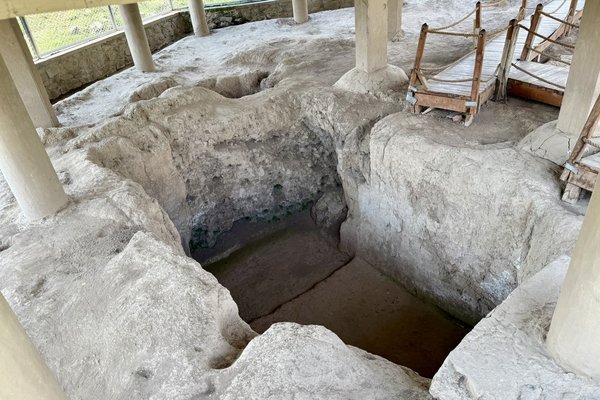India
Burzahom Neolithic Settlement
Burzahom was a Neolithic Settlement in Kashmir which existed between 3000 BCE and 1000 BCE.
The Burzahom site revealed the transition from the subterranean and ground level housing features of the Neolithic people to the mudbrick structures of the Megalithic people. The archeological findings indicate that its people established contact with Central Asia and South West Asia and also had links to the Gangetic plains and peninsular India.
Site Info
Official Information
- Full Name
- The Neolithic Settlement of Burzahom (ID: 5917)
- Country
- India
- Status
-
On tentative list 2014
Site history
History of Burzahom Neolithic Settlement
- 2014: Added to Tentative List
- Added to tentative list
- Type
- Cultural
- Criteria
Links
- UNESCO
- whc.unesco.org
All Links
UNESCO.org
- whc.unesco.org — whc.unesco.org
News Article
- June 23, 2019 greaterkashmir.com — Vandalised Burzahom stares at delisting from UNESCO
Community Information
- Community Category
- Archaeological site: Prehistoric
Travel Information
Recent Connections
News
- greaterkashmir.com 06/23/2019
- Vandalised Burzahom stares at deli…
Recent Visitors
Community Reviews
Show full reviews
Visited August 2025
Do not expect anything! This is the best advice I can give you. On UNESCO website you can read: From transition in architecture to development in tool-making techniques to introduction and diffusion of lentil in the north-western India, the site of Burzahom is a unique comprehensive story teller of life between 3000 BCE to 1000 BCE. Yes, storyteller. Or rather storywhisperer, so quietly… You cannot see it.
Yes, the site is very important for the development of agriculture and house building, not only in this part of India, but in the whole area at the border of Deccan and south-east Asia. Neolithic period, aceramic culture. From oval subterranean dwellings with wooden post for protecting plant cover to mud houses on level ground. Next step: Neolithic period, first ceramic, probably imported and locally copied. More mud brick construction, more wood used in construction techniques. Many artefacts (few of them in the National Museum in Delhi), burial pits and trepanned human skulls. Next step: Megalithic culture. With menhirs, more pottery and more remains of cultivated plants.
You can read this in many articles – and the reading suggests more than you can see.
Artificial hill on the outskirt of Srinagar town. Easily reached by rickshaw or city bus. No ticket counter, but cows enjoying the fresh grass. Undulating terrain. A temporary roof over the archaeological digs from Y2K. Menhirs not in their original position (but the most spectacular). Reconstruction of wooden piles. Muslim cemetery on the norther edges of …
Keep reading 0 comments
